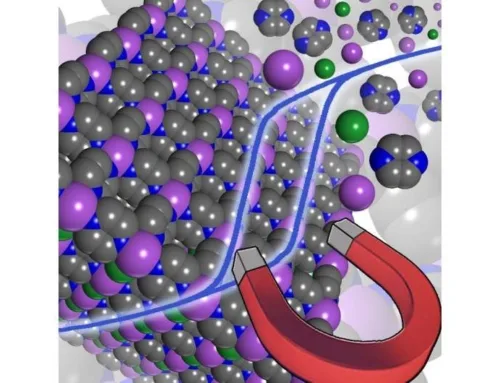Magnetic Components in AI Hardware
Magnets play a key role in AI hardware, powering several important components. Magnetic sensors and actuators are common—they help devices detect position, movement, and orientation, which is essential for robotics, drones, and IoT gadgets. These sensors provide precise feedback that AI systems use to make real-time decisions.
Magnetic memory, especially MRAM (Magnetoresistive Random-Access Memory), is gaining traction in AI applications. MRAM stores data using magnetic states instead of electric charges, offering faster speeds and better energy efficiency compared to traditional memory. Spintronics, a technology that leverages electron spin along with charge, supports this type of magnetic memory. It’s a promising approach to improve AI chip performance by boosting processing speed while reducing power use.
Traditional magnetic storage like hard disk drives (HDDs) and magnetic tapes continue to be reliable solutions for storing the massive amounts of data AI needs. While solid-state drives (SSD) grow in popularity, magnetic storage remains cost-effective for large-scale data archives in AI systems.
Together, these magnetic components form the backbone of various AI devices, helping improve speed, reliability, and energy efficiency in hardware designs.
Emerging Technologies Combining Magnetism and AI
Magnetism is playing a growing role in cutting-edge AI technologies. One exciting area is neuromorphic computing, where magnetic synapses mimic how brain neurons communicate. This approach aims to create AI systems that are faster and more energy-efficient by copying real brain functions using magnetic materials.
Another breakthrough is spintronics, which uses the spin of electrons instead of just their charge to process information. This allows for faster AI computation and lower energy consumption. Spintronics has the potential to revolutionize AI chips by making them smaller and more powerful.
Magnetic sensors also empower AI in devices across robotics and the Internet of Things (IoT). These sensors provide precise, real-time data, helping AI systems understand and interact with the environment more effectively. From robots navigating spaces to smart devices detecting movements, magnet-based sensors improve AI performance in practical applications.
Together, these technologies showcase how magnetism is becoming essential in advancing AI hardware and enabling smarter, faster, and more efficient AI solutions. For more on how magnets work and their uses, you can visit this page on how magnets are used in daily life.
Advantages of Magnetic Materials in AI Applications
Magnetic materials bring clear benefits to AI hardware, making devices faster and more energy efficient. Here’s how:
- Speed: Magnetic components, especially in memory like MRAM, offer quick data access. This cuts down processing delays and speeds up AI tasks.
- Energy Efficiency: Unlike traditional electronics, magnetic materials often require less power. This helps AI devices run longer without overheating or wasting energy.
- Miniaturization: Magnetic elements can be made very small without losing performance. This lets manufacturers pack more power into compact AI chips and devices.
- Durability: Magnetic materials are built to last. They handle frequent read/write cycles better than some alternatives, which is crucial for dependable AI operation.
- Reliability: These materials maintain consistent performance even in changing temperatures or heavy use, keeping AI systems stable and trustworthy.
Together, these advantages make magnets an essential part of modern AI technology, supporting smarter, leaner, and longer-lasting hardware. For more on magnetic properties, check out our guide on which magnets can withstand high temperatures.
Challenges and Future Outlook for Magnets in AI
Magnets play a key role in AI, but there are still some challenges holding back their full potential. Current magnetic materials sometimes face limits in speed, miniaturization, and heat resistance, which affects their performance in advanced AI hardware. Also, integrating magnetic components smoothly with existing AI chips can be tricky and costly.
Despite these hurdles, ongoing research is pushing boundaries. New magnetic materials and technologies, like spintronics and magnetic memory (MRAM), show promise to overcome these limits. Quantum computing is another exciting area where magnetism could make a big impact, helping AI process data faster and more efficiently.
NBAEM is actively supporting this future by supplying cutting-edge magnetic materials tailored for AI applications. Their innovations focus on durability, energy efficiency, and improved magnetic properties—meeting the demands of AI hardware manufacturers as these technologies evolve.
For more on the materials powering advanced tech, check out NBAEM’s guide to rare earth magnets and their expertise in magnets used in new energy vehicles.
Case Studies and Real World Applications
Magnets play a crucial role in many AI products and devices today. For example, magnetic sensors are widely used in robotics and smart devices to provide precise motion detection and environmental feedback, improving AI decision-making and performance. AI-powered smartphones often rely on magnetic memory like MRAM to store data quickly and securely, supporting fast app responses and seamless user experiences.
Several industries benefit from magnetic materials in AI:
- Automotive: Magnetic sensors help AI systems in self-driving cars detect position and speed accurately, enabling safer navigation and adaptive cruise control.
- Healthcare: AI devices use magnetic components in advanced diagnostic tools and wearable monitors that track vital signs in real-time.
- Robotics: Magnetic actuators enable precise control and movement in AI-driven robots used for manufacturing, logistics, and even household tasks.
These real-world examples show that magnets are more than just a part of traditional electronics—they are vital enablers of smarter, faster, and more reliable AI technologies. To learn more about different types of magnets used in electronics and AI, check out magnets used in electronics and computers.
Why NBAEM Is Your Trusted Magnetic Material Partner for AI Innovations
NBAEM stands out as a leading supplier of magnetic materials specifically designed to support AI hardware development. With years of experience in the magnetic materials industry, NBAEM understands the unique demands of AI manufacturers in the U.S. market. Their expertise ensures they deliver components that boost performance, reliability, and efficiency in AI devices.
NBAEM’s product range includes advanced magnetic alloys and precision magnetic components suitable for AI chips, magnetic sensors, and memory devices like MRAM. These materials are engineered to support faster data processing, lower energy use, and long-term durability—key factors for AI applications.
What sets NBAEM apart is their commitment to quality and continuous innovation. They focus on meeting strict standards and collaborate closely with AI hardware producers to tailor magnetic solutions that fit specific technical needs. This dedication makes NBAEM a dependable partner for companies looking to leverage magnet-based AI technology innovations in robotics, IoT, automotive, and healthcare sectors throughout the United States.





Leave A Comment